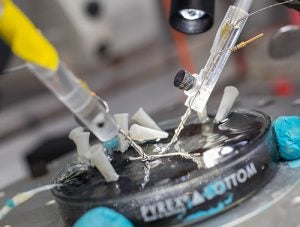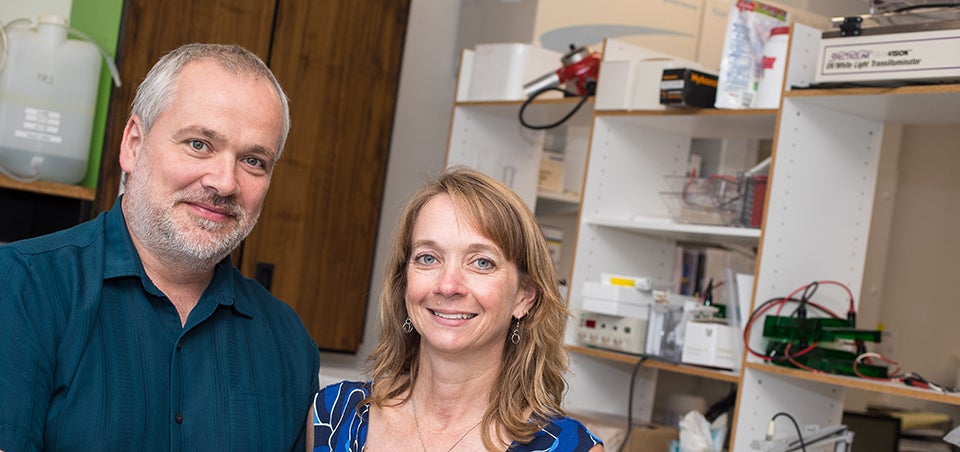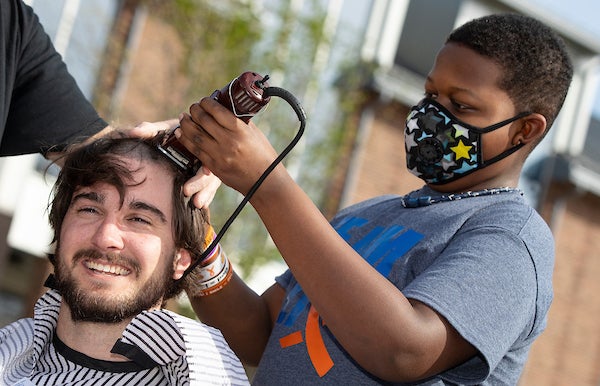PAIN RELIEVERS
Drug research targets neuropathic pain
Scientists at the Brody School of Medicine at East Carolina University are researching a novel approach to treating the debilitating pain that commonly occurs after a spinal cord injury. Their work is supported by a new two-year, $300,000 grant from the Craig H. Neilsen Foundation.
The most common treatment for the ailment, known as neuropathic pain, is as troublesome as it is effective. It involves the use of opioids such as morphine, which can become less effective as the body builds up tolerance to them. Opioids also are considered extremely addictive and put patients at risk of substance abuse.
Dr. Kori Brewer, associate professor of emergency medicine, and Dr. Stefan Clemens, associate professor of physiology, are working on a better answer.
The researchers will combine opioid drugs with medications that influence dopamine production. Dopamine is a chemical in the brain that affects emotions and the way people perceive feelings such as pleasure or pain.

A spinal column from a mouse is used by researchers.
“The goal is to combine previously developed drugs that have synergistic actions on the nervous system to maximize the benefit at lower doses than either drug would require on its own, reducing the likelihood of unwanted side effects,” Brewer said.
Roughly 1.3 million Americans are paralyzed due to spinal cord injuries. The resulting neuropathic pain can be intense and patients often describe it with words such as “sharp,” “stabbing,” “burning” and “electrical.” It affects quality of life, disturbs sleeping patterns and makes it harder for patients to participate in physical therapy that is essential to their recovery.
The pain is so extreme that an influential survey conducted in the 1990s showed that most patients named neuropathic pain as one of the most difficult consequences of their injury along with loss of motor function and bladder control.
“One aspect is the chronic nature of this neuropathic pain,” Clemens said. “No treatment at this point is really effective over time.”
Brewer earned her doctorate at ECU before completing her post-doctoral training at the Miami Project to Cure Paralysis. There, she focused on the sensory complications of spinal cord injuries and was first introduced to the problem of chronic neuropathic pain occurring after spinal cord injuries. Brewer has since returned to ECU as a faculty member at the Brody School of Medicine, where she has continued her work on the mechanisms and treatments of spinal cord injuries.
Clemens received his master’s at University Münster in Germany and his doctoral and continental “Habilitation” degree at the University of Bordeaux in France. Before coming to ECU, Clemens held post-doctoral positions at Georgia State University and the Emory University School of Medicine.
Clemens and Brewer have previously worked together to study potential reasons why opioids may not be the most effective treatment for spinal cord injury related neuropathic pain. The findings of that research are the basis for their latest grant.
“The nice thing about this is that we’re not trying to develop a new drug, not spending years trying to come up with a new idea,” Brewer said. “The drugs are already out there, already available for people, (we just need to) see if we can use them in a new way that’s going to benefit.”
The researchers hope the availability of the drugs could mean a better treatment is accessible in just a few years.
Eventually, the method could be applied to other chronic pain syndromes such as those associated with peripheral nerve injuries, restless leg syndrome and even the normal aging process.

Dr. Stefan Clemens and Dr. Kori Brewer
